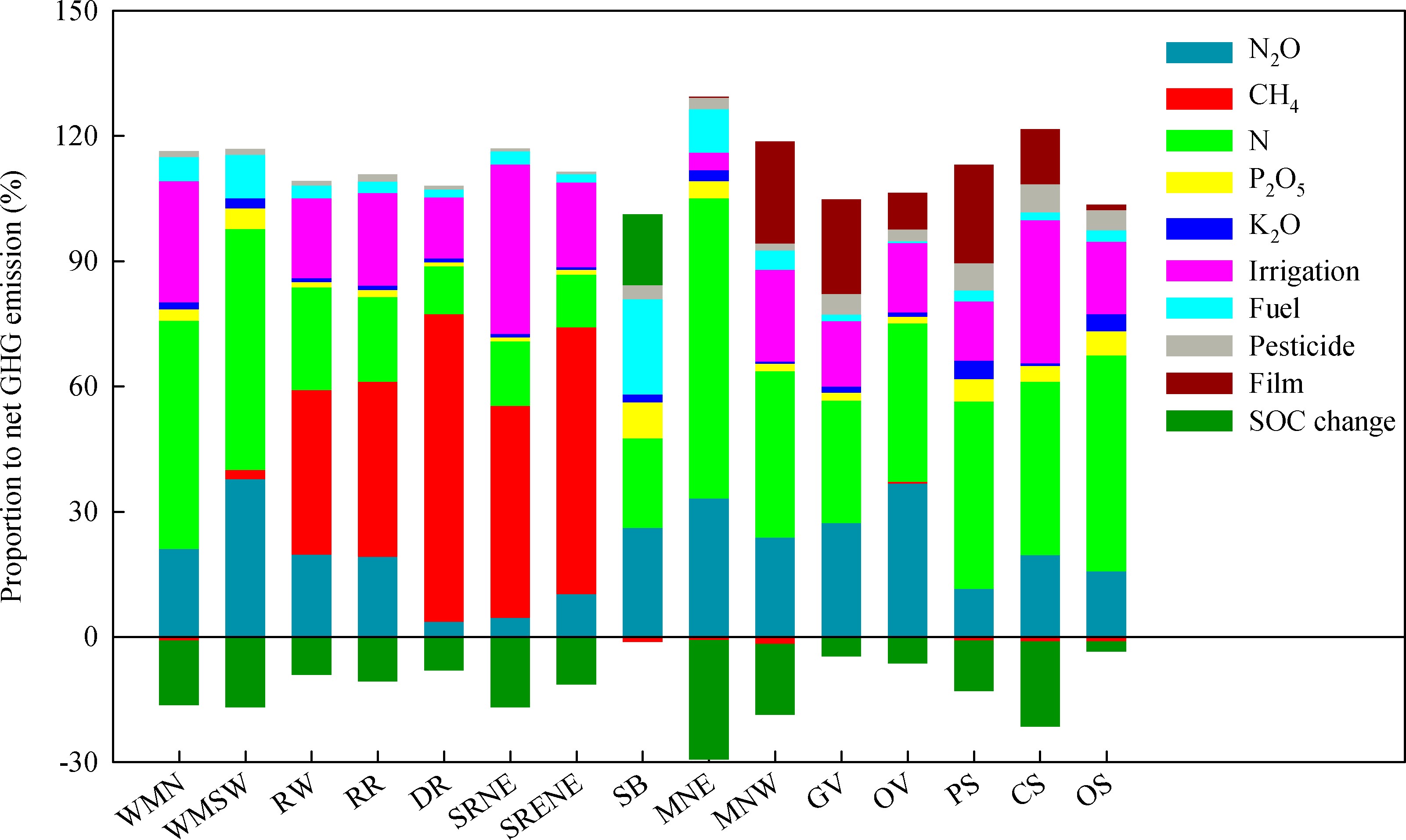As the primary production system of food chain, farmland planting process is an important process of agricultural greenhouse gas emission (GHG). Since the beginning of the 21st century, a large number of studies on the changes of soil organic carbon (SOC) in farmland at the national and regional scales have been carried out in China. It was found that the average SOC is increasing in different degrees except in Northeastern China, and farmland plays a role in carbon fixation and emission reduction. However, there large amount of fertilizer, pesticides and power use for irrigation during the Chinese agricultural production, the combustion of which results in GHG emissions. The climate benefits of SOC sequestration in croplands might be offset by N2O and CH4 emissions, and upstream CO2 released from the life cycle of agricultural inputs. Many studies have been done on GHG balance of different Chinese crop systems, however, it is obvious to find that the different crop systems in different regions have different accounting components, diversified and non-localization parameters, which leads to great uncertainty and lack of comparability in many domestic studies.
In view of this, the Urban Ecological Process and Regulation research group of Institute of Urban Environment, Chinese academy of sciences (Shenghui Cui’s lab), united with China Agricultural University and other units, quantified the carbon fixation rate of each crop systems by collecting the SOC changes in different crop systems published in literature between 2000 and 2017. At the same time, the actual consumption of fertilizer input, power use for irrigation, pesticide and fuel in the process of agricultural planting, as well as the related greenhouse gas emissions in the upstream of production and the greenhouse gas emissions in the stage of agricultural planting were collected. The integrated GHGs of different crop systems were calculated with uniform components and parameters. The results found that the China’s farmland is a large greenhouse gas emission source because the average amount of GHGs generated in agricultural input and planting process is 12 times that of soil carbon sequestration and carbon reduction in corresponding system. This study further analyzed the main sources of GHGs from different agricultural systems in China, and proposed further reduction measures. The results can provide theoretical guidance for the development of low-carbon agriculture in China, and also lay a data foundation for the subsequent studies on carbon emission rights allocation from the perspective of food trade.
This research was published on the Global Change Biology with the title of ‘Chinese cropping systems are a net source of greenhouse gases despite soil carbon sequestration’. Bing Gao is the first author; Prof. Shenghui Cui and Prof. Xiaotang Ju are the corresponding authors. This work was funded by the National Basic Research Program of China (973 Project), Young Talents Projects of the Institute of Urban Environment, Chinese Academy of Sciences, and National Natural Science Foundation of China, etc. https://onlinelibrary.wiley.com/doi/epdf/10.1111/gcb.14425.

(Text: Bing Gao; Figure: Bing Gao)